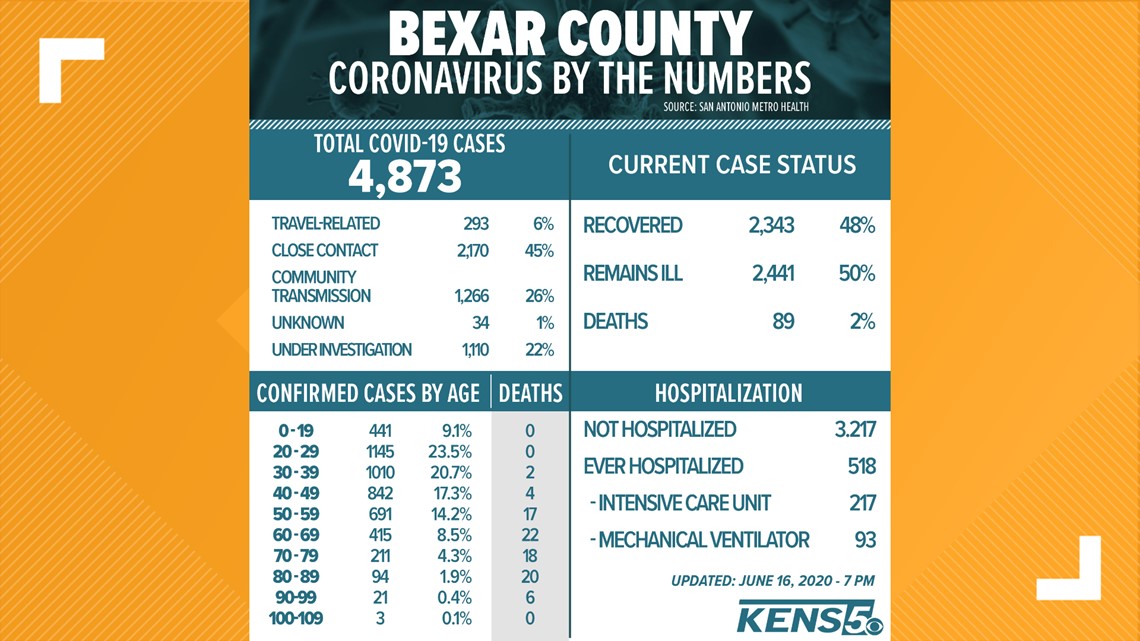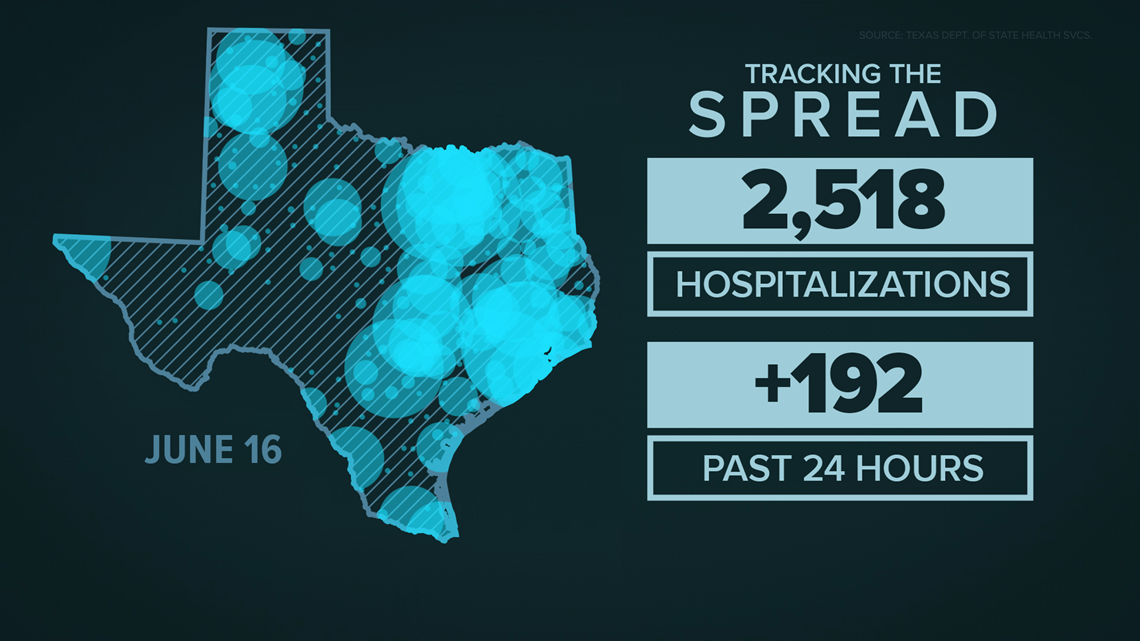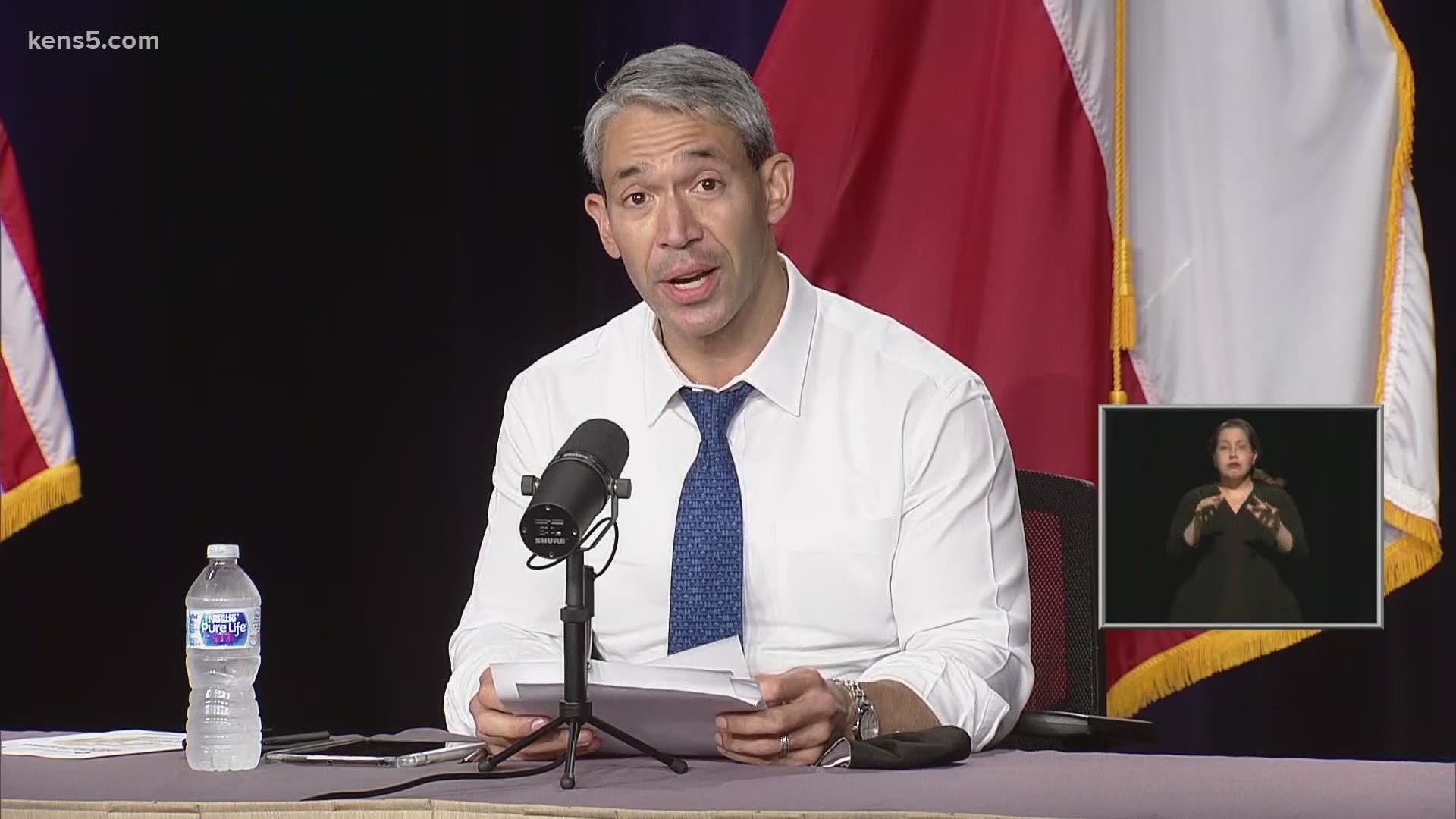SAN ANTONIO — We're tracking the latest numbers from the coronavirus pandemic in San Antonio and across Texas. Here are the latest numbers reported by Bexar and surrounding counties:
- Bexar County: 436 new cases Tuesday; a total of 4,873 cases and 89 fatalities.
- Comal County: 38 new confirmed cases were reported Monday. The count's total has now risen to 197 confirmed cases with and additional 43 probable cases of coronavirus. Seven people have died in the county, while 137 have recovered.
- Hays County: 155 new cases Tuesday; a total of1,093 cases and five fatalities in the county; 55 additional recoveries were reported Tuesday, bringing the total number of residents recovered to 322.
San Antonio Mayor Ron Nirenberg reported that an additional 436 cases of the novel coronavirus have been confirmed in Bexar County on Tuesday, bringing the total to 4,873. Meanwhile, no new deaths from COVID-19 complications were reported; the local death toll remains at 89. In total, 2,343 residents have recovered from the virus.
The jump in cases Tuesday marks the largest single-day increase in Bexar County.
In addressing the numbers, Mayor Nirenberg noted that younger individuals were winding up in the hospital battling coronavirus and urged people to take the virus seriously. More than 60 percent of the county's cases are now among those ages 25-to-49.
Also, 22 percent of the county's cases remain "under investigation." Mayor Nirenberg said this is because "folks aren't following up with our contact tracers. If you've tested positive for COVID-19 and get a call from Metro Health, please help your community by providing necessary information."
Here are Tuesday's full numbers. Bexar County reports them daily at 7 p.m.:


How Bexar County is trending:
We're tracking how many coronavirus cases are confirmed in Bexar County each day from the time San Antonio Metro Health began reporting cases more than two months ago. Graphing those daily case numbers along a 14-day moving average provides an accurate picture of the curve in the San Antonio area and the direction we're heading amid the coronavirus.


Coronavirus in Texas
Cumulative cases in Texas jumped by 4,098 Tuesday, according to state health officials. Texas DSHS said the number consisted of 2,622 new cases and 1,476 previously diagnosed inmates in Anderson and Brazoria counties that were first reported Tuesday.


192 people were hospitalized due to coronavirus in the last 24 hours, raising the total number of hospitalizations in the state to 2,518. Over the last five days, the number of hospitalizations in the state has surged by 544, or 25 percent. On June 12, there were 2,166 people in Texas hospitals with the virus.
Tuesday, Gov. Greg Abbott says there is an "abundant number of hospital beds" in the state despite a record number of coronavirus hospitalizations.
There are 14,993 available hospital beds statewide, or about 27% of the total number of beds. State health officials say that's double the amount in early March when the first cases of COVID-19 were reported in Texas.
Abbott also said people ages 30 and younger are testing positive at a higher rate than other age groups.
Here's a look at the 14-day moving average of the new daily coronavirus cases in Texas:


LATEST CORONAVIRUS HEADLINES:
- Mayors of nine Texas cities call on Gov. Abbott to allow them to enforce mask orders
- Texas Workforce Commission to reinstate 'work search requirement' for people receiving unemployment
- San Antonio cancels Fourth of July celebration at Woodlawn Lake
- Gov. Abbott emphasizes mask-wearing, staying home as Texas sets another record for COVID-19 cases
- VERIFY: Yes, you can join the military if you've had COVID-19 and recover
- US expects insurers to cover COVID vaccine without copays
- US extends border restrictions with Canada, Mexico to July 21
- First drug proves able to improve survival from COVID-19
Coronavirus symptoms
The symptoms of coronavirus can be similar to the flu or a bad cold. Symptoms include fever or chills, cough, shortness of breath or difficulty breathing, fatigue, muscle or body aches, headache, new loss of taste or smell sore throat, congestion or runny nose, nausea or vomiting and diarrhea, according to the Centers for Disease Control.
Most healthy people will have mild symptoms. A study of more than 72,000 patients by the Centers for Disease Control in China showed 80 percent of the cases there were mild.
But infections can cause pneumonia, severe acute respiratory syndrome, kidney failure, and even death, according to the World Health Organization. Older people with underlying health conditions are most at risk.
The CDC believes symptoms may appear anywhere from two to 14 days after being exposed.
Human coronaviruses are usually spread...
- Between people who are in close contact with one another (within about 6 feet).
- Through respiratory droplets produced when an infected person coughs, sneezes or talks. These droplets can land in the mouths or noses of people who are nearby or possibly be inhaled into the lungs.
- Some recent studies have suggested that COVID-19 may be spread by people who are not showing symptoms.
Help stop the spread of coronavirus
- Stay home when you are sick.
- Eat and sleep separately from your family members
- Use different utensils and dishes
- Cover your cough or sneeze with your arm, not your hand.
- If you use a tissue, throw it in the trash.
Lower your risk
- Wash your hands often with soap and water for at least 20 seconds. If soap and water are not available, use an alcohol-based hand sanitizer.
- Avoid touching your eyes, nose, and mouth with unwashed hands.
- Avoid close contact with people who are sick.
- Clean and disinfect frequently touched objects and surfaces.
- The CDC recommends wearing a mask or cloth face covering if you have to be out due to an essential service or essential activity such as going to the grocery store.
- If you are 60 or over and have an underlying health condition such as cardiovascular disease, diabetes or respiratory illnesses like asthma or COPD, the World Health Organization advises you to try to avoid crowds or places where you might interact with people who are sick.

